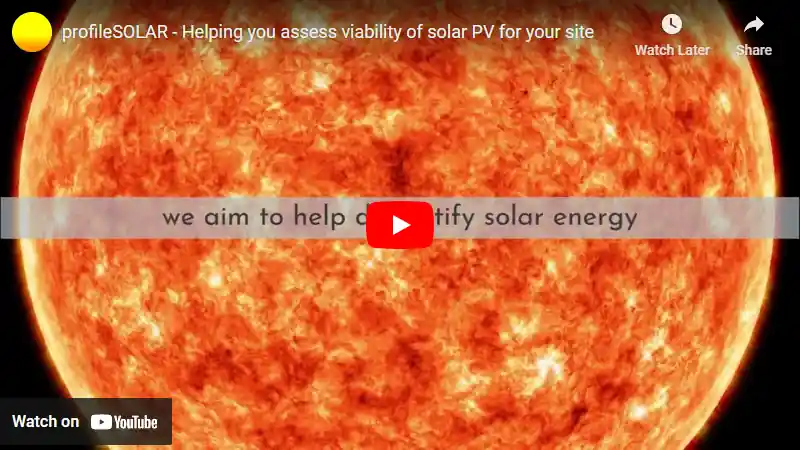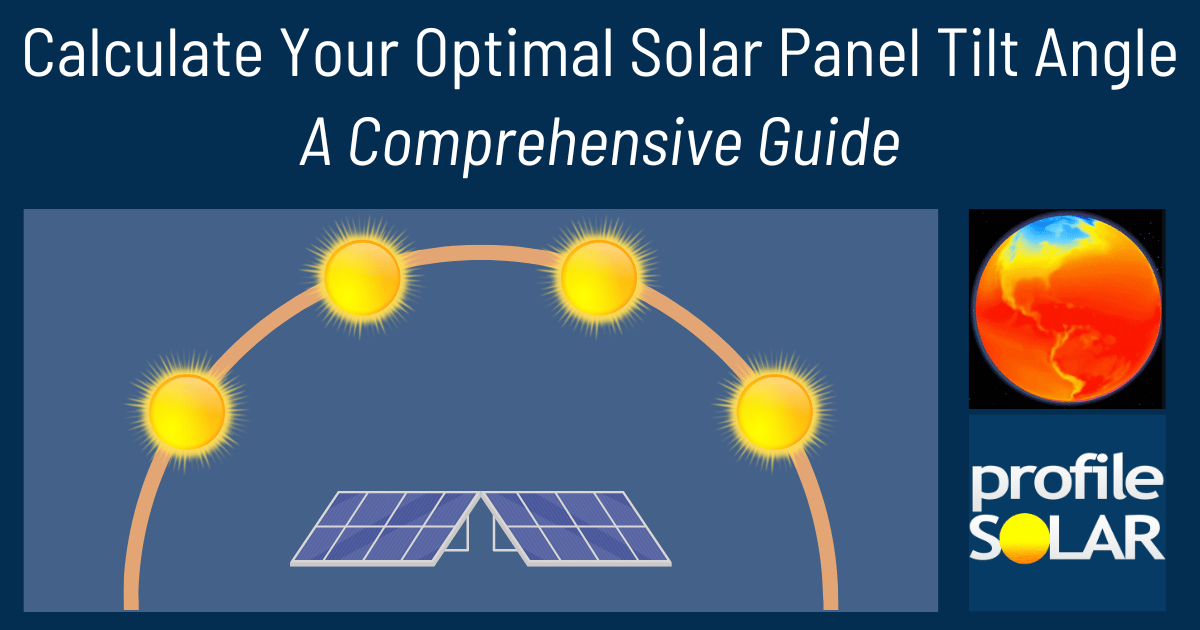

Springwood, in New South Wales, Australia is a decent location for generating energy through solar panels all year round. However, the amount of energy that can be produced varies with each season. In simple terms, the energy production depends on how much sunlight the solar panels get.
In summer and spring, when there's more sunlight, your solar panels can generate more power - about 6.48 kilowatt-hours (kWh) and 5.75 kWh per day respectively for every kilowatt (kW) of installed solar capacity. That's quite good! In autumn and winter though, when days are shorter and there's less sunlight available, your panels will produce less power - around 4.42 kWh/day in autumn and even lower at 3.28 kWh/day in winter per kW of installed solar.
To get the most out of your solar panel system throughout the year at this location it is best to install them at an angle facing 30 degrees North.
There might be some local factors like weather conditions or physical features of the landscape that could affect how much energy you're able to generate from your solar panels here though.
For instance if there are lots of trees or buildings around that cast shadows onto your panels then this would reduce their exposure to sun light which means they would produce less power. Similarly if it’s often cloudy then this could also limit how much sun light reaches your panels.
To address these issues you should consider where you place your solar panel system carefully so as to minimize any shading from nearby trees or buildings as far as possible; trimming back branches where necessary may also help improve exposure to sunlight too!
Also bear in mind that while cloudy weather does reduce output from a PV system it doesn't stop it altogether because even on overcast days some light still gets through which means some electricity will still be generated by the PV cells albeit not as much compared with clear sunny days.
Note: The Southern Sub Tropics extend from -23.5° latitude South down to -35° latitude.
So far, we have conducted calculations to evaluate the solar photovoltaic (PV) potential in 392 locations across Australia. This analysis provides insights into each city/location's potential for harnessing solar energy through PV installations.
Link: Solar PV potential in Australia by location
Become the exclusive sponsor for Springwood, Australia!
Solar output per kW of installed solar PV by season in Springwood
Seasonal solar PV output for Latitude: -33.6991869, Longitude: 150.5711133 (Springwood, Australia), based on our analysis of 8760 hourly intervals of solar and meteorological data (one whole year) retrieved for that set of coordinates/location from NASA POWER (The Prediction of Worldwide Energy Resources) API:




Ideally tilt fixed solar panels 30° North in Springwood, Australia
To maximize your solar PV system's energy output in Springwood, Australia (Lat/Long -33.6991869, 150.5711133) throughout the year, you should tilt your panels at an angle of 30° North for fixed panel installations.
As the Earth revolves around the Sun each year, the maximum angle of elevation of the Sun varies by +/- 23.45 degrees from its equinox elevation angle for a particular latitude. Finding the exact optimal angle to maximise solar PV production throughout the year can be challenging, but with careful consideration of historical solar energy and meteorological data for a certain location, it can be done precisely.
We use our own calculation, which incorporates NASA solar and meteorological data for the exact Lat/Long coordinates, to determine the ideal tilt angle of a solar panel that will yield maximum annual solar output. We calculate the optimal angle for each day of the year, taking into account its contribution to the yearly total PV potential at that specific location.

Seasonally adjusted solar panel tilt angles for Springwood, Australia
If you can adjust the tilt angle of your solar PV panels, please refer to the seasonal tilt angles below for optimal solar energy production in Springwood, Australia. As mentioned earlier, for fixed-panel solar PV installations, it is optimal to maintain a 30° North tilt angle throughout the year.
| Overall Best Summer Angle | Overall Best Autumn Angle | Overall Best Winter Angle | Overall Best Spring Angle |
|---|---|---|---|
| 17° North in Summer | 39° North in Autumn | 48° North in Winter | 28° North in Spring |
Our recommendations take into account more than just latitude and Earth's position in its elliptical orbit around the Sun. We also incorporate historical solar and meteorological data from NASA's Prediction of Worldwide Energy Resources (POWER) API to assign a weight to each ideal angle for each day based on its historical contribution to overall solar PV potential during a specific season.
This approach allows us to provide much more accurate recommendations than relying solely on latitude, as it considers unique weather conditions in different locations sharing the same latitude worldwide.
Topography for solar PV around Springwood, Australia
Springwood, Australia is located in the lower Blue Mountains of New South Wales. The topography is characterized by steep cliffs, eucalyptus forests, and deep valleys. It experiences a temperate climate with warm summers and mild winters.
Given this topography, large-scale solar PV systems would be best suited for areas that are relatively flat and receive ample sunlight throughout the year. However, due to the hilly terrain in Springwood and its surrounding areas, it may be challenging to find large flat spaces for solar PV installations.
There are several factors that need to be considered when determining suitable locations for large-scale solar PV systems:
1) Sunlight: Large-scale solar PV systems require an area with high levels of sunlight throughout the year.
2) Land availability: Large-scale solar projects require a significant amount of land. Therefore, regions with ample unused or underutilized land would be most suitable.
3) Proximity to grid connection: The location should ideally be near existing electrical grid infrastructure to minimize costs associated with transmitting electricity from the plant to consumers.
4) Environmental impact: The site selection should also consider potential environmental impacts such as effects on local ecosystems or agricultural lands.
In terms of specific locations near Springwood that might meet these criteria better than others - open areas around Richmond and Penrith could potentially serve as viable options given their relative flatness compared to mountainous regions like Springwood itself. These areas are part of Sydney's greater western region which generally has more available land space compared with other parts closer towards Sydney city center.
However, a detailed feasibility study including site inspections would need to be conducted before any definitive conclusions can be made about suitability for large scale Solar PV installations in these or other nearby locations.
Australia solar PV Stats as a country
Australia ranks 7th in the world for cumulative solar PV capacity, with 19,076 total MW's of solar PV installed. This means that 10.70% of Australia's total energy as a country comes from solar PV (that's 2nd in the world). Each year Australia is generating 742 Watts from solar PV per capita (Australia ranks 2nd in the world for solar PV Watts generated per capita). [source]
Are there incentives for businesses to install solar in Australia?
Yes, there are a variety of incentives available in Australia to businesses wanting to install solar energy. These include:
1. Renewable Energy Target (RET): The RET provides businesses with financial assistance for installing and operating renewable energy systems such as solar panels. Businesses may be eligible to receive certificates that can be sold or traded on the open market for additional income.
2. Feed-in Tariffs: Some states offer feed-in tariffs which pay businesses for generating and exporting excess electricity from their solar panel system back into the grid during peak demand periods.
3. Solar Credits: The Solar Credits program provides households and small business owners with an upfront discount when purchasing a new solar system, based on the amount of renewable energy generated by the system over its lifetime.
4. Tax Breaks: Small business owners may be able to claim tax deductions on certain expenses associated with installing a solar power system, including installation costs, maintenance expenses and interest payments related to financing arrangements taken out specifically for this purpose.
Do you have more up to date information than this on incentives towards solar PV projects in Australia? Please reach out to us and help us keep this information current. Thanks!
Feeling generous?

Share this with your friends!


Compare this location to others worldwide for solar PV potential
The solar PV analyses available on our website, including this one, are offered as a free service to the global community. Our aim is to provide education and aid informed decision-making regarding solar PV installations.
However, please note that these analyses are general guidance and may not meet specific project requirements. For in-depth, tailored forecasts and analysis crucial for feasibility studies or when pursuing maximum ROI from your solar projects, feel free to contact us; we offer comprehensive consulting services expressly for this purpose.
Helping you assess viability of solar PV for your site
Calculate Your Optimal Solar Panel Tilt Angle: A Comprehensive Guide
Enhance your solar panel's performance with our in-depth guide. Determine the best tilt angle using hard data, debunk common misunderstandings, and gain insight into how your specific location affects solar energy production.

.svg)





